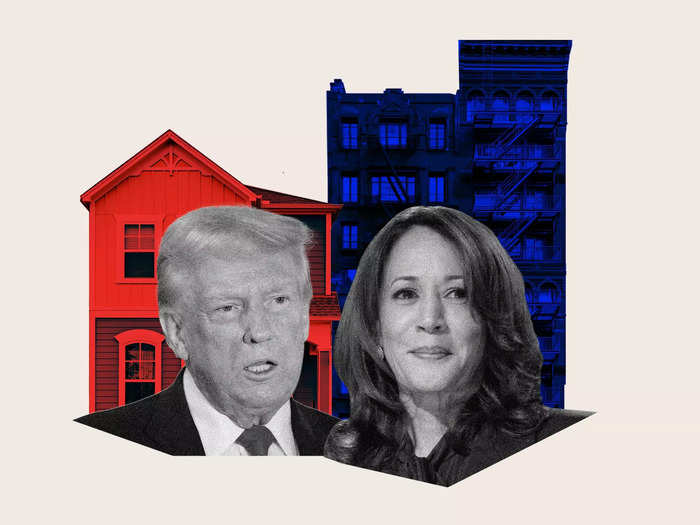Thousands of homes on $1 land: The new housing crisis solution sweeping the country | Business Insider India

🌈 Abstract
The article discusses the proposals by Democratic Vice President Kamala Harris and former Republican President Donald Trump to build housing on federal land to address the severe housing shortage in the United States. It also explores the potential benefits and challenges of using government-owned land for housing development.
🙋 Q&A
[01] Building Housing on Federal Land
1. What are the key proposals by Harris and Trump regarding building housing on federal land?
- Harris wants to continue the Biden administration's efforts to open up certain federal land parcels for dense affordable housing development.
- Trump has proposed building entirely new cities on federal land, which has been generally dismissed by economists and housing experts as unworkable or undesirable.
2. What are the potential benefits of using federal land for housing development?
- The federal government owns a significant amount of land, especially in the Western states, which could be leveraged to build more housing.
- Using government-owned land can help make affordable housing projects more financially feasible, as the land is effectively donated, reducing development costs.
- Repurposing federal properties in urban, transit-rich areas for housing could increase the supply of homes in high-demand markets.
3. What are some of the challenges in using federal land for housing?
- The federal government does not have much prime, vacant land in cities to devote to housing, so the focus would be on repurposing existing federal properties.
- Redeveloping old federal buildings or unique structures can be challenging due to the high costs of repairs, particularly for properties protected by historic preservation laws.
- Building new housing on federal land in remote areas could lead to more sprawl, which comes with environmental and economic concerns.
[02] Loneliness and Financial Insecurity Among Older Adults
1. What are the key challenges faced by low-income older adults in maintaining social connections?
- Many older adults on fixed incomes, like Social Security, struggle to afford the costs associated with social activities, such as dining out, travel, and entertainment.
- Some older adults feel stigma or misconceptions about government assistance programs, which prevents them from seeking the help they need and further isolates them.
- Mobility issues and transportation problems can make it difficult for older adults to participate in social activities, especially as they age.
2. How does financial insecurity contribute to loneliness among older adults?
- Older adults living on limited incomes, such as just Social Security, often have to decline social invitations due to the costs involved, leading to increased isolation.
- Some older adults are reluctant to share their financial struggles with friends and family, further exacerbating their feelings of loneliness.
- Without adequate savings or support networks, some older adults worry about who will care for them as they lose their independence, adding to their sense of isolation.
3. What are some of the misconceptions and stigma surrounding government assistance programs for older adults?
- Some older adults believe that if they enroll in benefits like SNAP or senior nutrition programs, they are "taking something away" from others who need it more.
- There is a perception that seeking government aid is shameful, which prevents older adults from accessing the benefits they are entitled to and could help improve their financial and social well-being.
[03] The Credit Card Rewards Game
1. What are the key motivations for younger consumers to pursue credit card rewards?
- Younger consumers, like the 20-year-old featured, see credit card rewards as a way to unlock luxury experiences and travel that they may not otherwise be able to afford.
- The ability to perform "points arbitrage" by using credit cards to earn rewards on purchases they would make anyway is a major draw for this demographic.
2. What are some of the potential downsides of the credit card rewards system?
- The rewards system can incentivize overspending and debt, as consumers may make purchases they wouldn't otherwise make to earn more points.
- The costs of the rewards system are ultimately passed on to merchants and other consumers who don't use rewards cards, creating a "subsidy" for rewards users.
- As credit card companies adjust their rewards programs over time, previously valuable perks can be devalued or eliminated, disappointing loyal users.
3. How does the credit card rewards system contribute to economic stratification?
- Exclusive perks and access, like airport lounges, can create a "skyboxification" effect, where wealthier consumers have access to premium experiences that are out of reach for those without high-end credit cards.
- This can lead to a sense of dread that society is becoming increasingly divided between those who can access these rewards-based luxuries and those who cannot.